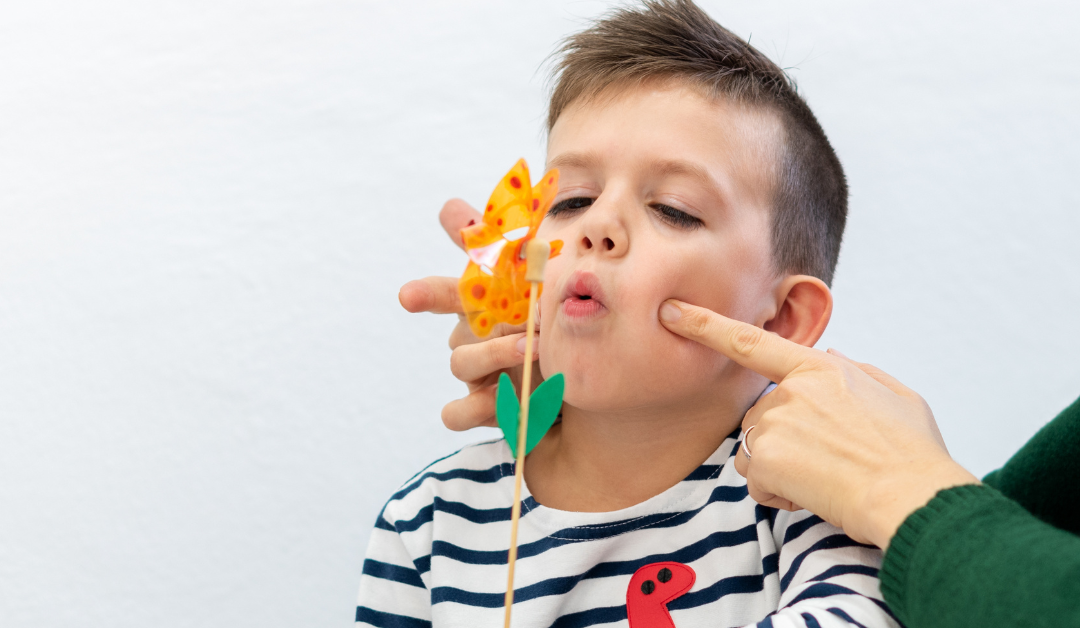When it comes to helping preschoolers with speech delays, parents often hear about two different types of therapy—Applied Behavior Analysis (ABA therapy for speech delay) and speech therapy. But here’s the thing: it’s not an either-or situation! These two therapies actually complement each other beautifully, and when ABA therapists and speech therapists collaborate, children get the best of both worlds.
Early intervention is key for children with speech delays, and typically, outpatient referrals connect families with ABA and speech therapy.
While speech therapists often work within schools, collaborating with ABA therapists in an outpatient setting can provide even greater benefits for preschoolers who need structured learning, behavioral support, and language development.
So, let’s explore how ABA therapy for speech delay works, how it integrates with speech therapy, and why a collaborative approach is the gold standard for helping kids reach their full potential.
Is ABA Good for Speech Delay?
Absolutely! ABA therapy for speech delay is highly effective because it focuses on reinforcing positive behaviors, encouraging communication, and reducing frustration related to difficulty expressing needs. While ABA therapy is commonly associated with autism treatment, it’s also a powerful tool for children with speech and language delays, whether or not they have an autism diagnosis.
Here’s why ABA therapy for speech delay is beneficial:
- Encourages Functional Communication: ABA therapists use structured reinforcement to help children use words, gestures, or communication devices effectively.
- Breaks Down Speech into Manageable Steps: Some kids struggle with complex speech patterns. ABA therapy teaches communication step by step, making it easier for them to grasp.
- Reduces Challenging Behaviors Caused by Frustration: When kids can’t communicate their needs, they might act out. ABA therapy helps them express themselves in a positive way instead.
- Works Hand-in-Hand with Speech Therapy: ABA therapy doesn’t replace speech therapy—it enhances it! By reinforcing the skills taught by speech therapists, ABA therapists ensure children practice and apply their new communication skills consistently.
How is ABA Used in Speech Therapy?
While speech therapy focuses on the mechanics of speech and language, ABA therapy for speech delay helps kids apply what they learn in real-life situations. The two therapies often work together in the following ways:
- Joint Sessions: ABA and speech therapists may collaborate in outpatient settings to create a personalized plan that reinforces language development through behavioral techniques.
- Reinforcement Strategies: ABA therapists use positive reinforcement (such as praise, tokens, or small rewards) to encourage children to use the words and communication strategies they learn in speech therapy.
- Prompting and Shaping Techniques: ABA therapists help children practice speech sounds and words by breaking them down into smaller steps and gradually guiding them toward correct pronunciation and sentence formation.
- Functional Language Development: Speech therapists focus on articulation and vocabulary, while ABA therapists reinforce these skills in day-to-day routines to ensure children generalize them beyond therapy sessions.
- Reducing Communication Barriers: Some children with speech delays develop habits like avoiding communication or using gestures instead of words. ABA therapy helps break these patterns and encourages more verbal communication.
This teamwork ensures that speech therapy techniques don’t just stay in therapy rooms—they become part of a child’s everyday interactions!
What Therapy is Best for Speech Delay?
There’s no one-size-fits-all answer, but in many cases, combining ABA and speech therapy yields the best results. Here’s a breakdown of different therapies that can help with speech delays:
- ABA Therapy for Speech Delay: Best for children who need structured reinforcement, behavioral support, and functional communication skills.
- Speech Therapy (SLP – Speech-Language Pathology): Focuses on articulation, phonology, and expressive/receptive language skills.
- Occupational Therapy: Helps with motor coordination and sensory processing, which can impact speech development.
- Play-Based Therapy: Encourages language learning in a natural, engaging setting.
- Music or Art Therapy: Stimulates verbal expression in creative ways.
The best approach depends on the child’s specific needs, but when ABA and speech therapy work together, the chances of improvement skyrocket.
What is Better, ABA Therapy or Speech Therapy?
The real question isn’t which therapy is better, but how they work together. Both ABA therapy for speech delay and speech therapy have their own strengths:
- ABA Therapy: Best for reinforcing speech skills through repetition, structured learning, and behavior modification techniques.
- Speech Therapy: Best for diagnosing speech delays, improving articulation, and developing language skills.
Rather than choosing one over the other, most professionals recommend using both approaches simultaneously. ABA therapists help children apply what they learn in speech therapy, while speech therapists work on improving the mechanics of speech.
A collaborative approach ensures that:
- Speech therapists develop communication skills and language structure.
- ABA therapists reinforce speech therapy lessons in everyday interactions.
- Kids practice and generalize their new communication skills in real-life settings.
Final Thoughts: The Power of Collaboration in ABA Therapy for Speech Delay
When it comes to helping children with speech delays, ABA and speech therapists aren’t in competition—they’re partners. By working together, they create a well-rounded, individualized approach that supports a child’s ability to communicate, express emotions, and build social skills.
ABA therapy for speech delay doesn’t replace speech therapy—it amplifies it! When these two therapies work hand-in-hand, children gain the tools they need to navigate the world with confidence.
For parents navigating the world of speech delays, know this: you don’t have to choose between ABA therapy and speech therapy. Instead, consider them as complementary pieces of the puzzle. The more collaboration, reinforcement, and real-world practice a child receives, the better their progress will be!
So, if your child has a speech delay and you’re considering therapy options, don’t be afraid to explore both.
A strong team of ABA and speech therapists can make all the difference in helping your child find their voice and thrive.


